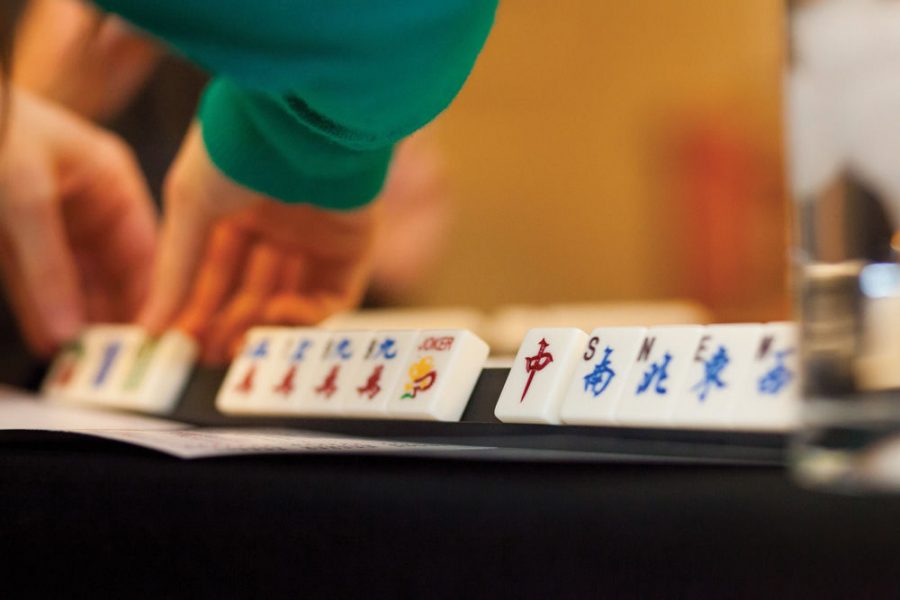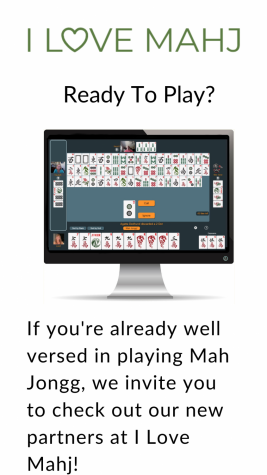This Week in Mah Jongg: Game Strategy (Part 3)
Published October 12, 2021
In our previous article, we delved into the nitty-gritty of Charleston strategy. This time, we’ll be moving into the game proper and will cover the essentials of early game strategies. In subsequent articles, we’ll cover mid- and end-game strategies, since strategy will vary depending on how far along in the game you are.
These phases are defined for teaching purposes only. In a real game, there is no fixed boundary between them, and you certainly should exercise judgment when transitioning from one to the next. Think of them as a continuum rather than three rigid and disparate phases. OK, let’s dive in!
EARLY-IN-THE-GAME STRATEGIES
Don't be too quick to pick discards
ADVERTISEMENT
As a beginner, it is tempting to pick discards to make a pung or kong as early as possible in the game. It feels like you're making progress and often locks in your hand choice, removing the mental strain of potentially tracking several options. But it is generally not a good idea to do this early in the game.
By picking a discard, you are exposing part of your hand. Experienced players will be able to determine which hand you're playing (or at least narrow it down to a subset) and will actively work to thwart your efforts.
By exposing early, you also lock yourself into a hand (or small subset of hands) which may prove fatal if that hand does not pan out (which may very well be the case, since other players will be managing their discards to kill your hand).
Finally, you lose the ability to play a concealed hand.
The dangers of exposing early are magnified when jokers are involved, this is because:
- You may discover after exposing that you receive the tiles you need from the wall. Although you’ll be able to retrieve your joker(s) for future use, you won’t be able to change the fact that your opponents have gained valuable information regarding the direction of your hand
- While your joker was tied up in this exposure, you were unable to use it for another crucial part of your hand later in the game
- You offer your opponents the opportunity to take that joker from you, thereby assisting them towards Mah Jongg.
If you are playing with inexperienced opponents, they may not be able to figure out your hand from one exposure. So, you could argue the risk of being "found out" is smaller in that case. However, the points about locking yourself in and exposing jokers for others to claim still stand.
ADVERTISEMENT
In summary, be patient and don't pick discards until your hand is strong enough (typically once you have 7 or 8 tiles towards Mah Jongg).
Don't grow a pair
As we know, pairs are more difficult to make. So if you have a pair at this stage of the game it's best not to grab a discard to turn it into a pung. The exception would be if you already have a definite hand chosen and that hand (and any potential fallback) would never need that pair. But even in that case, picking discards early is still risky as detailed in the previous section.
Don't worry too much about discarding hot tiles
This early in the game, there are rarely hot tiles (tiles needed by opponents to complete sets or - God forbid - Mahj). So you don't need to be overly concerned about accidentally discarding something valuable. On the contrary, you should actively aim to discard tiles others might want but can't pick up yet as described in the next two sections.
Discard popular tiles
In our article focusing on Charleston strategy, we mentioned that players should avoid passing in-demand tiles such as flowers, white dragons and other such tiles (depending on the year). Since we are in the early phase of the game, now is the time to dispose of these tiles (assuming, of course, you don't need them for your target hand or any backup hands). At this stage, combinations are less likely to be at a point where opponents can claim those discards, even though they may desperately need them. Additionally, opponents may not yet have solidified their choice of hand and, therefore, may just not be ready to claim discards.
Discard tiles your opponents need
Were you able to track the tiles being passed and retained by players during the Charleston? Have you managed to stay on top of the tiles that have been discarded thus far, along with any early exposures? If so, you probably have a fairly good idea of the hands (or at least section of the card) that your opponents are pursuing, even this early in the game. (there will be more on “reading Mah Jongg hands” in a future article.)
If you do figure out someone's hand and you have tiles you know they need, be sure to discard them at this early stage (unless you need them yourself, of course). In particular, if the hand in question requires a pair, discard those tiles as early as possible.
It's likely your opponent won't be able to claim these discards because their combinations may not be far enough along and/or they don't have enough jokers at this early stage. If you wait until later in the game, you may be offering your opponent a valuable gift and potentially a win.
Don't change your hand too soon
Let's say you've settled on a hand, but a few tiles you need have already been discarded. Beginners often panic and give up on the hand, switching to another (potentially more challenging) hand. This often leads to negative progress. At this early stage in the game, there is still a good chance to pick up those tiles (keep in mind there are 8 flowers, 8 jokers and 4 instances of all other tiles). So, don't give up too soon! This is particularly true if those discarded tiles were for a pung or kong. A pair could be a little more tricky and there are cases where switching will be the right call (for instance, if 3 of those tiles have been exposed or discarded).
Well, that completes our strategy discussion for the early stage of the game. Try these suggestions out next time you play! In our next article, we’ll move into mid-game strategies, so we look forward to seeing you again then!
Q&A’s
Readers’ questions:
Q: I started to take a tile from the wall and then realized that I needed the last discard. Can I still call it?
A: That depends. Have you only touched the tile, or have you moved it in any way? If the tile has been moved, you are committed to taking that tile and the window of opportunity for you to claim the previously discarded tile has closed. Note that the window of opportunity for other players at the table only closes once the wall tile you picked is seated on the sloped part of your rack.
Q: I verbally claimed a discard and picked it up. Right away I realized that it wasn’t the tile I needed. Can I put it back on the table?
A: You sure can. As long as that tile and no other tiles from your rack during this turn have been placed on the top part of your rack, then you have not committed yourself to that tile and can put it back on the table.
Q: I called a discard and placed a couple of tiles from the sloped part of my rack onto the top part of my rack. I hadn’t picked up the discard yet. Can I change my mind?
A: Unfortunately, you are committed to claiming the discarded tile. Once any of the following have taken place, it is not possible to reverse the decision:
- Placed tiles from the sloped part of your rack onto the flat top part of your rack
- Placed the discarded tile on the flat top part of your rack
- Placed the discarded tile on the sloped part of your rack
However, until you discard a tile, you can change the number of tiles exposed (for example, from a kong to a pung).
Q: I discarded a tile (named it and placed it on the table), can I change my mind?
A: Unfortunately, once a discard has been named or placed on the table it’s no longer possible to reverse your decision.
See you next time! In the meantime, keep your questions coming! Please email them to [email protected].















